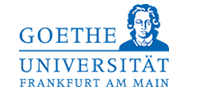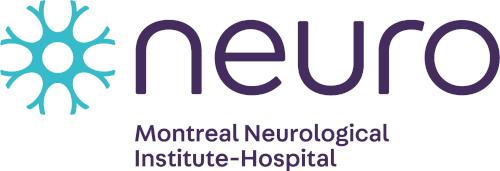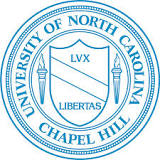 |
 |
 |
 |
 |
 |

Our knowledge on the epigenetic regulation of genome function has increased tremendously over the last 10 years. Often the existence of a pharmacological inhibitor such as trichostatin A or butyrate for HDACs advances the field allowing the experimental and even clinical progress. SGC’s epigenetic probe program has already generated a number of such well characterized inhibitor molecules for methyltransferases, demethylases, methyllysine binders and bromo domain and PHD proteins - www.thesgc.org/scientists/chemical_probes
The SGC collaborates with medicinal chemists in pharmaceutical companies and academia to create potent, selective and cell-active inhibitors.
Because of the SGC’s open access policy and philosophy these probes (even those made by Pharmaceutical companies) are freely available for any academic collaborator. Bringing together our network of academic collaborators and pharmaceutical companies presents unique opportunities and nurtures a truly modern, open scientific exchange. We collaborate with experts in embryonic stem cell biology, pluripotency, leukemogenesis and leukemia initiating cell survival mechanisms, and inflammatory responses. For example, we have collaborated with James Ellis’s laboratory at the Hospital for Sick Children in Toronto to use the epi probes to elucidate the role of G9a in endogenous retrovirus silencing (Vedadi et al Nat Chem Biol. 2011 Jul 10;7(8):566-74). We worked with John Dick’s laboratory at the Ontario Cancer Institute to determine the role of DOT1L chemical inhibition in an experimental MLL-AF9 translocation leukemia model (Yu et al, Nat Commun. 2012 18;3:1288, see the model in: Barabe et al 2007 Science 316:600). We continue to work with the world’s leading experts in cancer initiating cell biology in leukemia and colon cancer to discover new epigenetic pathways and possible targets for cancer therapy.
Current Toronto cell biology projects include functional studies of methyltransferases PRMT3, PRMT5, EZH2/1, SETD7, SETD8, WHSC1, MLL family members, PRDM methyltransferases, methyl lysine binder WDR5 and chromatin binder UHRF1.
PRMT3 and 5 methylate Arg residues in various proteins and are overexpressed in cancer, play roles in metabolism, maintenance of pluripotency and gene regulation. These actions depend on the particular substrates that are methylated and while we know that PRMT5 can methylate histones and transcription factors the substrate specificity of PRMT3 is still largely being investigated.
MLL1, a component of the mammalian trithorax complex, is often translocated in acute myeloid and lymphoid leukemias. MLL1 and other MLL family members 2, 3, 4 are methyltransferases that together with WDR5, RBBP5, ASH2L and other proteins methylate histone H3 lysine K4 resulting in gene transcription activation. The scientific discoveries in the MLL family are constantly adding to our knowledge on the role of various complexes in the hematopoetic, nervous and other systems function and disease. We are working on developing chemical probes to the common complex component WDR5 as well as those for the distinct MLL family members to further investigate the function of this complex.
We recently released a chemical probe for EZH2, mammalian polycomb complex component that generally represses transcription and plays roles in development, cancer and pluripotency. EZH2 is often expressed in various cancers, activating mutations can be found in lymphomas while inactivating mutations are found in leukemia and several other cancers. This shows the complexity of EZH2 regulated processes and the need for further studies. In collaboration with Dr Catherine O’Brien we are looking at the effects of EZH2 inhibition on the colon cancer initiating cell phenotypes (see O'Brien et al 2012 Cancer Cell. 21(6):777-92., Kreso et al 2012 Science. Dec 13 [Epub]).
Histone methyltransferase SETD8 methylates H4K20m1 mark that changes with the cell cycle and is involved in regulating genome stability and DNA damage response. Another methyltransferase SUV4-20h1/2 di and trimethylates H4K20, represses transcription, maintains chromosome architecture and participates in DNA repair. We are currently identifying probe molecules to these H4K20 methyltransferases.
We recently published the first chemical probe to a methylysine binding domain (UNC1215) that prevents the polycomb factor L3MBTL3 from binding methylated targets (James et al Nat Chem Biol. 2013 Jan Epub). This has opened the door for several mechanistic projects on the chemical inhibition of other methyllysine binding proteins such as MBT domain and Tudor domain chromatin binders.
Group Members

Dalia studied biology at the University of Vilnius, Lithuania and environmental sciences in Budapest, Hungary. She received her doctorate in molecular cell biology and toxicology from the University of Manchester, UK. In her postdoctoral training at the University of Manchester and Ontario Cancer Institute, Toronto, she investigated kinase-transcription factor signaling and oncogene-driven programs associated with cellular stress, epigenetics, and cancer. Dalia’s scientific interests are epigenetic regulation of cellular signaling, modulation of epigenetic states using chemical biology, and mechanisms of epigenetic control of cellular adaptation and carcinogenesis.

Magdalena Szewczyk received her MSc degree from the University of Lodz, Poland, and her PhD from McMaster University, Canada. Throughout her graduate studies, she developed isoform-selective inhibitors for Plasma Membrane Calcium ATPases (PMCAs) using phage display, focusing on determining the role of PMCAs in coronary artery smooth muscle and endothelium. After two years of postdoctoral training at McMaster University, Magdalena joined SGC Toronto as a postdoctoral fellow. Currently, as a Research Associate, Magdalena is working on the development of cellular assays for cellular validation of chemical probes for epigenetic modifiers and readers, as well as understanding their role in cancer cell biology.

Victoria received her PhD from the University of Toronto, Canada. Her grad studies focused on the effects of natural variation in genetic backgrounds on perturbed phenotypes using C. elegans as a model organism. Victoria’s work is focusing on the development of cellular assays for E3 ligases.

Samir Barghout studied Pharmacy followed by a postgraduate diploma in pharmacology at Tanta University, Egypt. He has worked as a pharmacist and instructor of pharmacology & toxicology for three years at the Faculty of Pharmacy, Tanta University. He then obtained an MSc of Medical Science at the University of Alberta, where he did research on the molecular mechanisms of carboplatin resistance in ovarian cancer. Samir then obtained his PhD from the Department of Medical Biophysics at the University of Toronto, Canada. During his PhD, his research was focused on the preclinical evaluation and determinants of sensitivity of a first-in-class inhibitor of the ubiquitin-activating enzyme in acute myeloid leukemia. Samir is conducting research on the epigenetic regulators of anticancer drug response.

Dominic Owens joined SGC Toronto in January 2021. He is working on inhibitors of an E3 ligase complex called the GID/CTLH complex. Dominic hails from the UK and studied Stem Cell Biology (MSc) at Durham University, followed by a PhD at the Molecular Hematology Unit at the University of Oxford. During his PhD, he worked on chromatin biology and mechanisms of gene regulation of the transcription factor RUNX1/AML1, gaining experience with gene-editing, next-generation sequencing, and bioinformatics.

Raquel Machado joined SGC Toronto in February 2021. She is working on NSD2 in multiple myeloma and WDR protein function in the nucleolus. Raquel is from Brazil and studied Cell Biology (MSc) at the Swiss Federal Institute of Technology in Zürich, followed by a PhD at the Biochemistry Department at the University of Sao Paulo. During her PhD, she worked on the role of the chromatin remodeler protein CHD7 in glioblastoma, gaining experience with gene-editing and cell-based assays.
David Dilworth
Group Publications
2013
Nat. Chem. Biol.. 06.01.2013 . doi: 10.1038/nchembio.1157
PMID: 23292653
Biochem. J.. 01.01.2013 449(1):151-9. doi: 10.1042/BJ20121280
PMID: 22989411
2012
Nat Commun. 18.12.2012 3:1288. doi: 10.1038/ncomms2304
PMID: 23250418
Structure. 08.08.2012 20(8):1425-35. doi: 10.1016/j.str.2012.06.001
PMID: 22795084
Nat Rev Drug Discov. 13.04.2012 11(5):384-400. doi: 10.1038/nrd3674
PMID: 22498752
Cell. 30.03.2012 149(1):214-31. doi: 10.1016/j.cell.2012.02.013
PMID: 22464331
2011
J. Med. Chem.. 08.09.2011 54(17):6139-50. doi: 10.1021/jm200903z
PMID: 21780790
Nat. Chem. Biol.. 10.07.2011 7(8):566-74. doi: 10.1038/nchembio.599
PMID: 21743462
2009
J. Med. Chem.. 24.12.2009 52(24):7950-3. doi: 10.1021/jm901543m
PMID: 19891491

